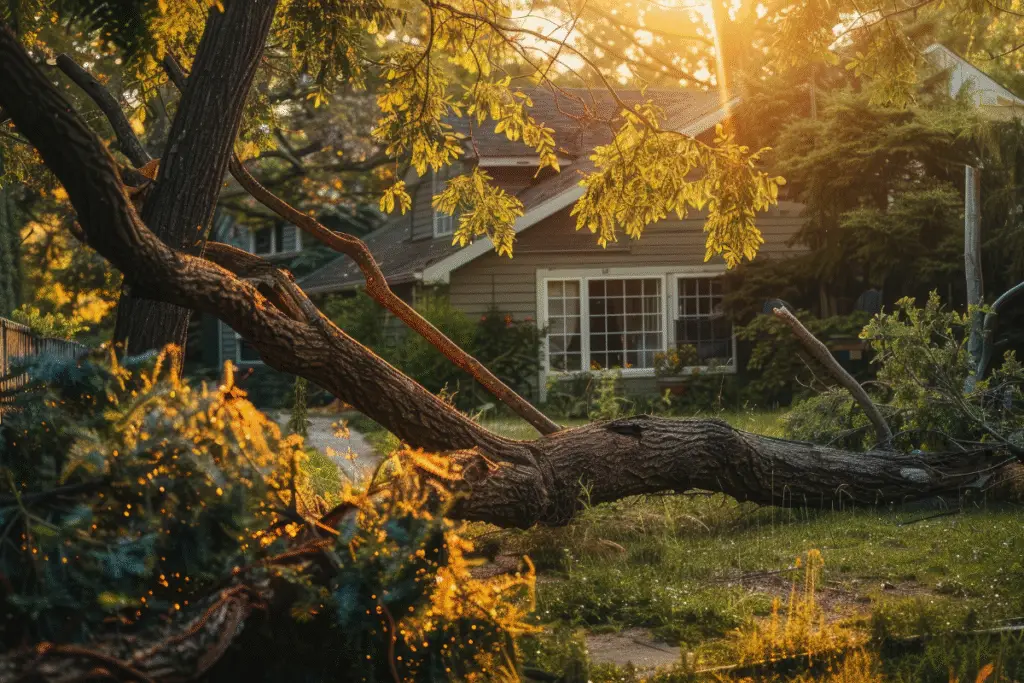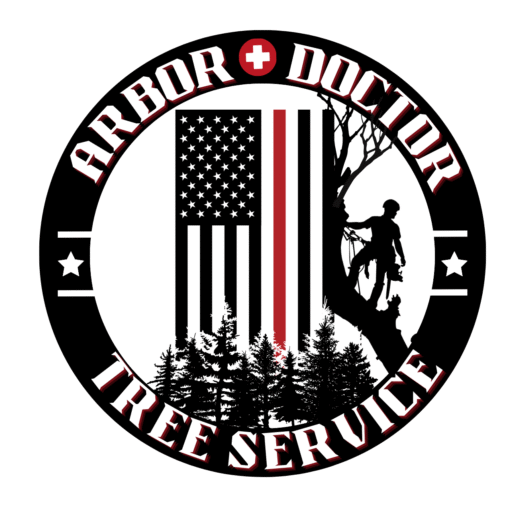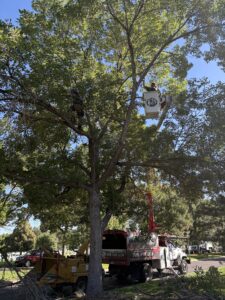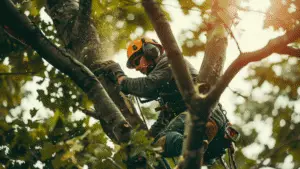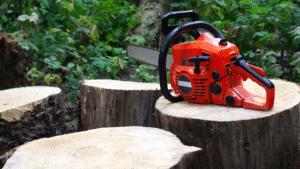Is Your Tree a Hazard? Identifying Limbs That Won’t Survive the Snow
Waiting until a limb crashes down in the middle of a blizzard is not the time to think about tree hazards. Proactive identification and removal of weak limbs can prevent costly damage, injury, and the need for an emergency storm response.
As the vibrant colors of autumn give way to the crisp air of late fall, Denver homeowners start thinking about winter. And while we love a beautiful blanket of snow, heavy snowfall, ice storms, and strong winds can quickly turn a beautiful tree into a dangerous liability.
Here’s how to assess your trees before winter hits.
Why Winter is the Toughest Test for Trees
Winter weather places immense stress on trees:
Heavy Snow & Ice: Even a few inches of wet snow or a thin glaze of ice can add hundreds, if not thousands, of pounds of weight to branches.
Strong Winds: Gusts can easily break weakened limbs, especially those already laden with snow or ice.
Frozen Soil: Makes trees less stable, as their root systems can’t adjust as easily.
A weak limb might survive a summer thunderstorm, but it often stands no chance against a heavy Colorado winter.
5 Signs a Tree Limb is a Potential Hazard
Walk around your yard and inspect your trees with a critical eye. Look for these red flags:
Dead or Dying Branches:
How to Spot: Look for branches with no leaves (when other similar branches still have them), discolored or brittle leaves, or bark that is peeling or missing. Even in fall, dead branches often look distinctively different from living ones, appearing darker or grayish.
Why it’s a Hazard: Dead wood is brittle and has no flexibility. It’s the first to break under snow or wind, often without warning.
Cracks or Splits in the Trunk or Major Limbs:
How to Spot: Examine the main trunk and where large branches attach. Look for vertical cracks, V-shaped splits, or deep gouges in the bark.
Why it’s a Hazard: These indicate structural failure. A crack can deepen and widen under stress, leading to a complete limb or trunk failure.
Weak Branch Unions (V-Shaped Crotches):
How to Spot: Look for two limbs growing out of the trunk at a sharp, narrow, V-shaped angle. This often traps bark inside the union (called included bark).
Why it’s a Hazard: Unlike strong, U-shaped unions, V-shaped unions lack the wood structure to support heavy weight. They are highly susceptible to splitting straight down the middle, especially when weighed down by snow.
Mushrooms, Fungi, or Conks at the Base or on the Trunk:
How to Spot: Any visible fungal growth on the bark or at the root collar (where the trunk meets the ground) is an unmistakable sign of internal decay. The fungus is the fruiting body of rot that is actively killing the interior wood.
Why it’s a Hazard: This indicates the structural integrity of the wood is compromised. Even if the branch looks fine on the outside, the wood holding it up is rotting away, making failure likely.
Cables, Braces, or Past Damage:
How to Spot: If your tree has old cables or support systems, check for rust, slack, or if the cables are digging into the wood. Also, look for large, open wounds that haven’t healed or previous storm damage that was never properly pruned.
Why it’s a Hazard: Old supports can fail, and unhealed wounds are entry points for decay, turning large sections of the tree into a time bomb.
Don’t Wait for the Crash: Schedule a Proactive Inspection
The best way to prevent a tree emergency this winter is to be proactive. Our certified arborists are experts in tree risk assessment. We can quickly identify the limbs and structural defects that pose a serious threat to your home, cars, and family.
Scheduling a consultation now, while the weather is calm, allows us to safely and methodically remove hazardous limbs through pro-active tree trimming and tree removal before they become a massive problem.
Our 24/7 Emergency Storm Response
We hope you never need us in the middle of a blizzard, but if a tree emergency does strike, know that we are here to help.
Our team provides reliable, 24/7 emergency storm response services across the Denver area. We are equipped to handle complex and dangerous tree removal scenarios, ensuring safety and minimizing further damage during chaotic weather events.
Don’t leave the safety of your property to chance this winter. Contact Arbor Doctor Tree Service today to schedule your pre-winter Tree Hazard Estimate. We look forward to hearing from you!
